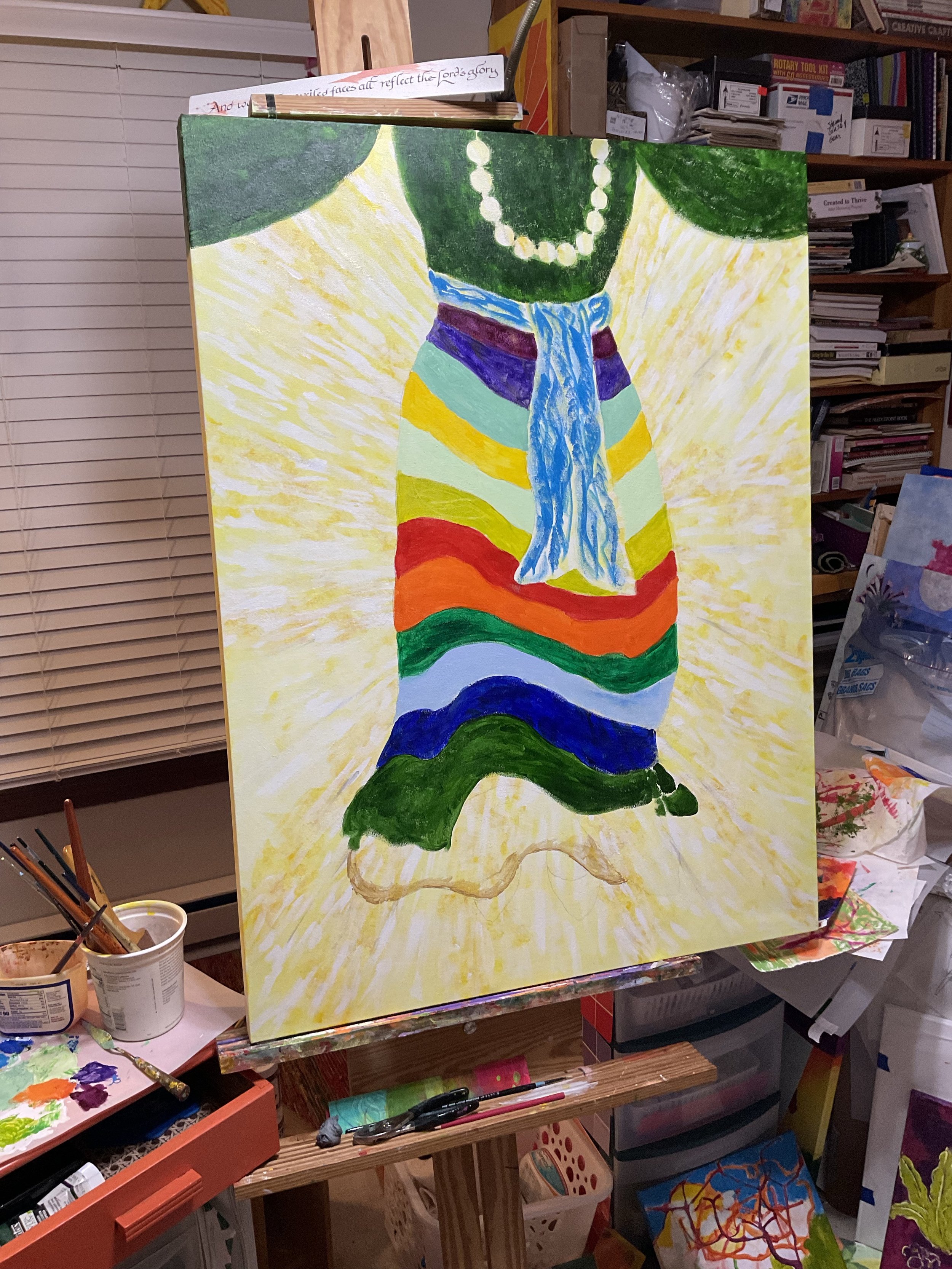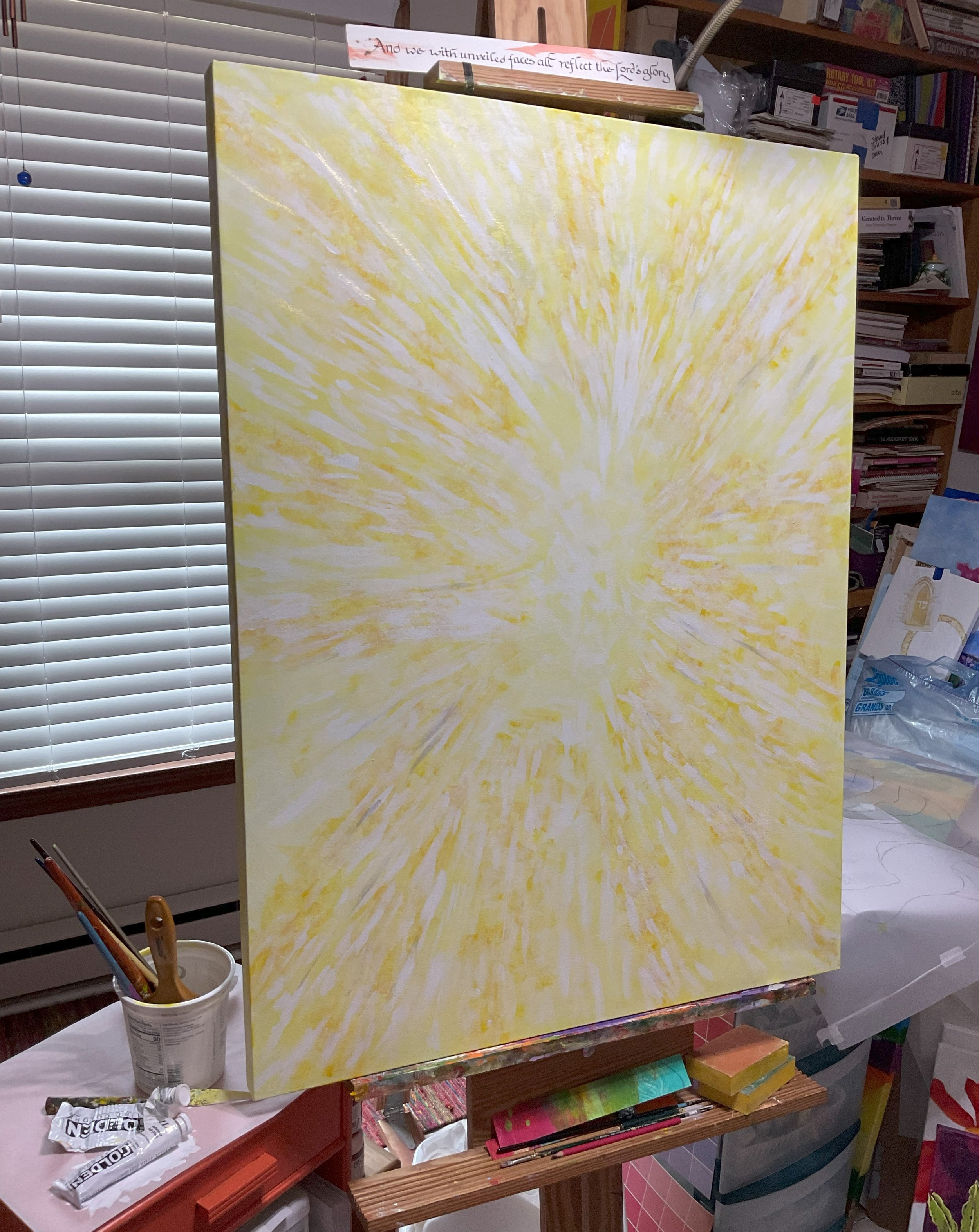“I saw the Holy City, the new Jerusalem, coming down out of heaven from God, prepared as a bride beautifully dressed for her husband.””
Lots of colors of paint in the studio today—ultramarine blue, cobalt and brilliant blues, phthalo and Hookers’ green, cadmium yellow hue, and vat orange and naphthol red light, with a bit of gold. These correspond with the colors of the twelve foundations in the wall of New Jerusalem, as described by John in Revelation (last book in the Bible).
“The wall was made of jasper, and the city of pure gold, as pure as glass. The foundations of the city walls were decorated with every kind of precious stone. The first foundation was jasper, the second sapphire, the third agate, the fourth emerald, the fifth onyx, the sixth ruby, the seventh chrysolite, the eighth beryl, the ninth topaz, the tenth turquoise, the eleventh jacinth, and the twelfth amethyst.”
I researched the colors of the stones—both in the original Greek, and from gemstone sources and found that first century names for stones aren’t necessarily the same as ours today. “Sapphire” in those times was lapis lazuli, from which ultramarine paint is made. Jasper, according to Pliny the Elder, a first century historian, was green. This painting has lots of green!
New Jerusalem Coming Down from Heaven as a Bride Beautifully Dressed for Her Husband; in progress in my studio.
Drawing transferred, these colors and I made progress in my studio today. The “Bride” painting is coming together. The last layer of the dress will be gold, for the streets of gold—I’ve suggested it so that you can imagine it. The belt of blue is the beginning of a representation of the River of the Water of Life.
I feel that this is a special painting, and pray that it will speak to people of what is ahead, to give them hope. We don’t have to wait for it all—one day; we can have a taste of it here and now.
“Your kingdom come, your will be done, on earth as it is in heaven.”



































